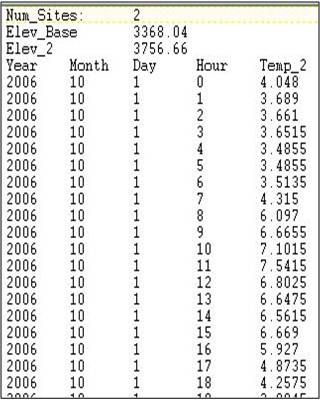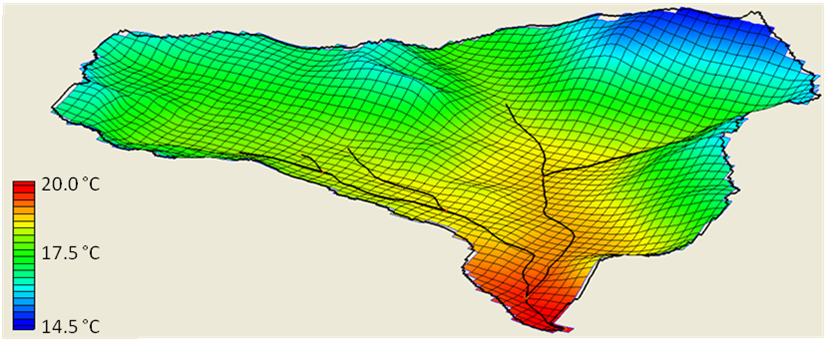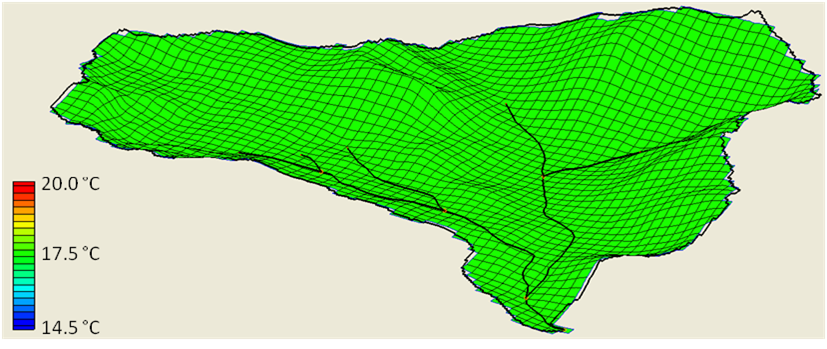Difference between revisions of "Orographic Effects"
| Line 3: | Line 3: | ||
'''User-Defined Constant Lapse Rate''' | '''User-Defined Constant Lapse Rate''' | ||
| − | The user can define a constant lapse rate (°C m<sup>-1</sup>), which will be applied to each cell within the basin. The cards required are shown below, followed by the equation used to adjust the temperature within each cell.<br> | + | The user can define a constant lapse rate (°C m<sup>-1</sup>), which will be applied to each cell within the basin. The cards required are shown below, followed by the equation used to adjust the temperature within each cell.<br><br> |
| − | ''Required Cards'' | + | ''Required Cards:'' |
| + | HMET_ELEV_GAGE<br> | ||
| + | YES_DALR_FLAG #.##### | ||
| + | <br><br> | ||
| + | ''General Method:''<br> | ||
{| | {| | ||
|- | |- | ||
| | | | ||
: | : | ||
| − | | width=550 | ''T<sub>adj</sub> = T<sub></sub> + (Elev<sub>gage</sub> - Elev<sub>cell</sub>) * LR || | + | | width=550 |
| + | | ''T<sub>adj</sub> = T<sub></sub> + (Elev<sub>gage</sub> - Elev<sub>cell</sub>) * LR || | ||
|} | |} | ||
{| |- | : | width=550 | {| |- | : | width=550 | ||
Revision as of 23:08, 28 December 2013
An orographic effect is the natural cooling of air masses as they rise from lower elevations to higher elevations due to terrain. GSSHA currently has two options for accounting for orographic effects. The user is able to define a constant lapse rate when only one temperature gage is located within the basin, and an option where GSSHA calculates the lapse rate hourly based on HMET data and the gage location within the basin. The figures below demonstrates a uniform temperature profile for an entire basin, and a temperature profile that accounts for orographic effects.
User-Defined Constant Lapse Rate
The user can define a constant lapse rate (°C m-1), which will be applied to each cell within the basin. The cards required are shown below, followed by the equation used to adjust the temperature within each cell.
Required Cards:
HMET_ELEV_GAGE
YES_DALR_FLAG #.#####
General Method:
|
|
width=550 | Tadj = T + (Elevgage - Elevcell) * LR |
| Tadj = adjusted temperature (°C) |
| Ta = temperature measured at the gage site (°C) |
| Elevcell = elevation of grid cell (m) |
| Elevgage = elevation of gage site (m) |
| LR = lapse rate (°C m-1) |
LR should be positive and between 0.0045 and 0.00981 °C m-1
File Format for Multiple Temperature Gage Locations
Elevations are in meters, temperatures in Celsius.
Elev_Base is the elevation (m) of the gage site used for the main hmet file.
Elev_2 is the elevation (m) of the secondary gage site.


